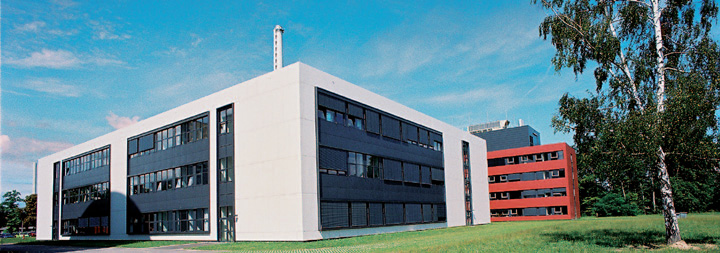About the Institute of Nanotechnology (INT)

Mission Statement
At the INT our goals are to produce cutting-edge fundamental research in the field of nanoscience and nanotechnology with a focus on applications, and to foster the careers of excellent young academics and scientists.
The INT is contributing to the mission of the KIT as a university and national research center of the Helmholtz Association.
Vision
We aim to discover new phenomena and make valuable contributions to research and development in the fields of electronics, optics, catalysis, energy storage and conversion, and bio-interfaces.
We hope to attract the best young researchers in the field by giving them the opportunity to:
- Maximize their potential
- Develop independence
- Improve their visibility
- Make use of state of the art facilities and equipment
- Work in an interdisciplinary, multicultural and creative environment
- Develop their own international network
Funding
Our base funding comes from the Helmholtz Programmes Materials Systems Engineering (MSE), Natural, Artificial, and Cognitive Information Processing (NACIP) and Materials and Technologies for the Energy Transition (MTET). Additional funding comes from a wide variety of sources, including the Deutsche Forschungsgemeinschaft (DFG), the German Federal Ministry of Education and Research (BMBF), and the European Union.

INT Executive Director Professor Dr. Horst Hahn (left) cutting the ribbon in the opening ceremony.
History
The Institute of Nanotechnology (INT) was founded in 1998 on the initiative of:
- Professor Herbert Gleiter, a former member of the Board of Directors of the Forschungszentrum Karlsruhe (now KIT Campus North, the large-scale research sector)
- Professor Dieter Fenske of the University of Karlsruhe (now KIT Campus South, the university sector)
- and of the University of Strasbourg and a current member of our Board of Directors (also a 1987 Chemistry Nobel Prize winner)

Building
The INT began in a container-based laboratory and office building. In 2004 the institute expanded with the completion of building 717 (right), now hosting the BELLA laboratory and other activities of the INT and other KIT institutes on battery research.
Having grown from 30 to over 300 members, the institute eventually required a substantially larger building; building 640 (above top) was completed in 2008. For details on our state-of-the-art laboratories see the equipment and facilities pages.
Building 717
